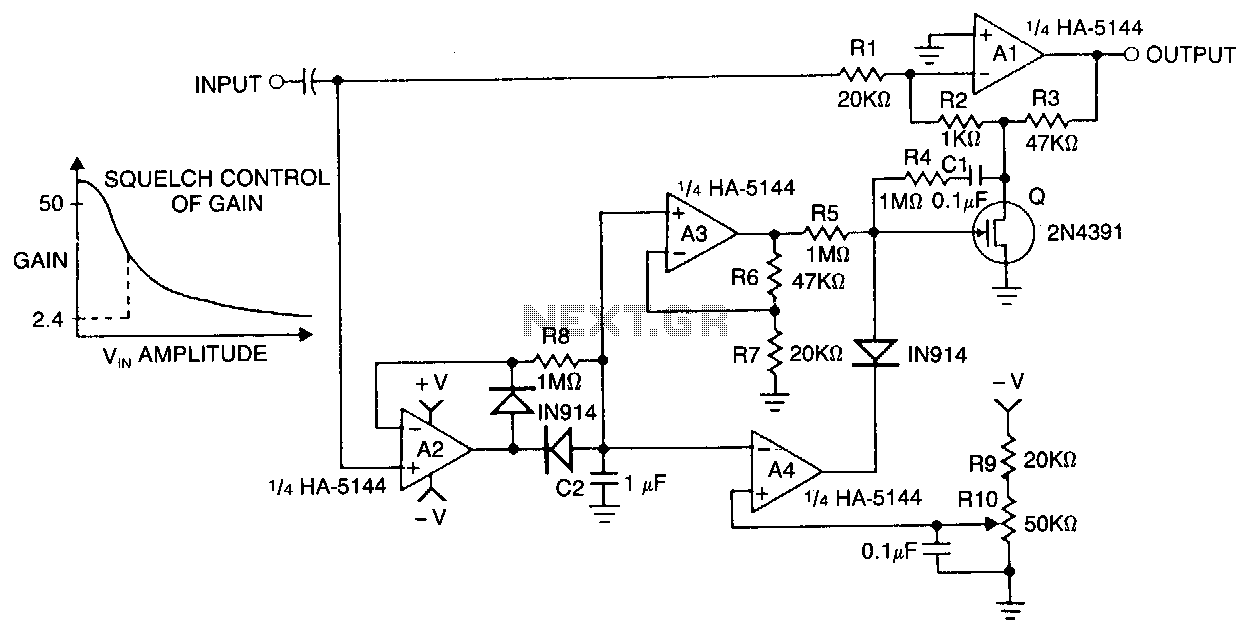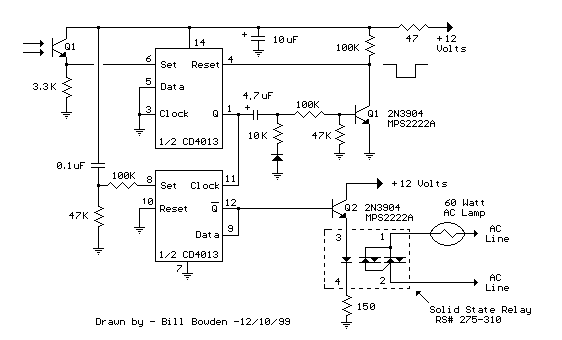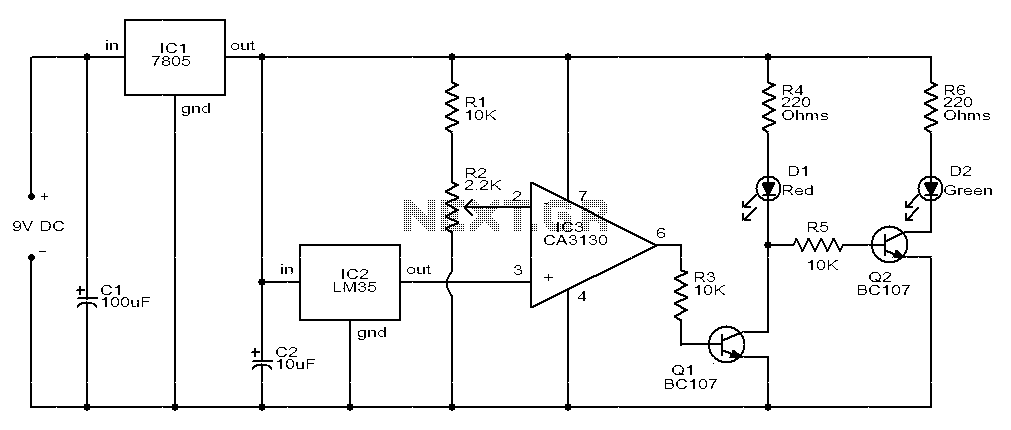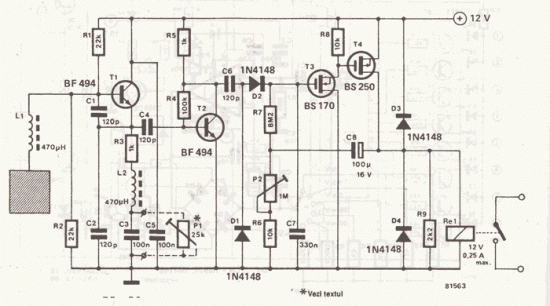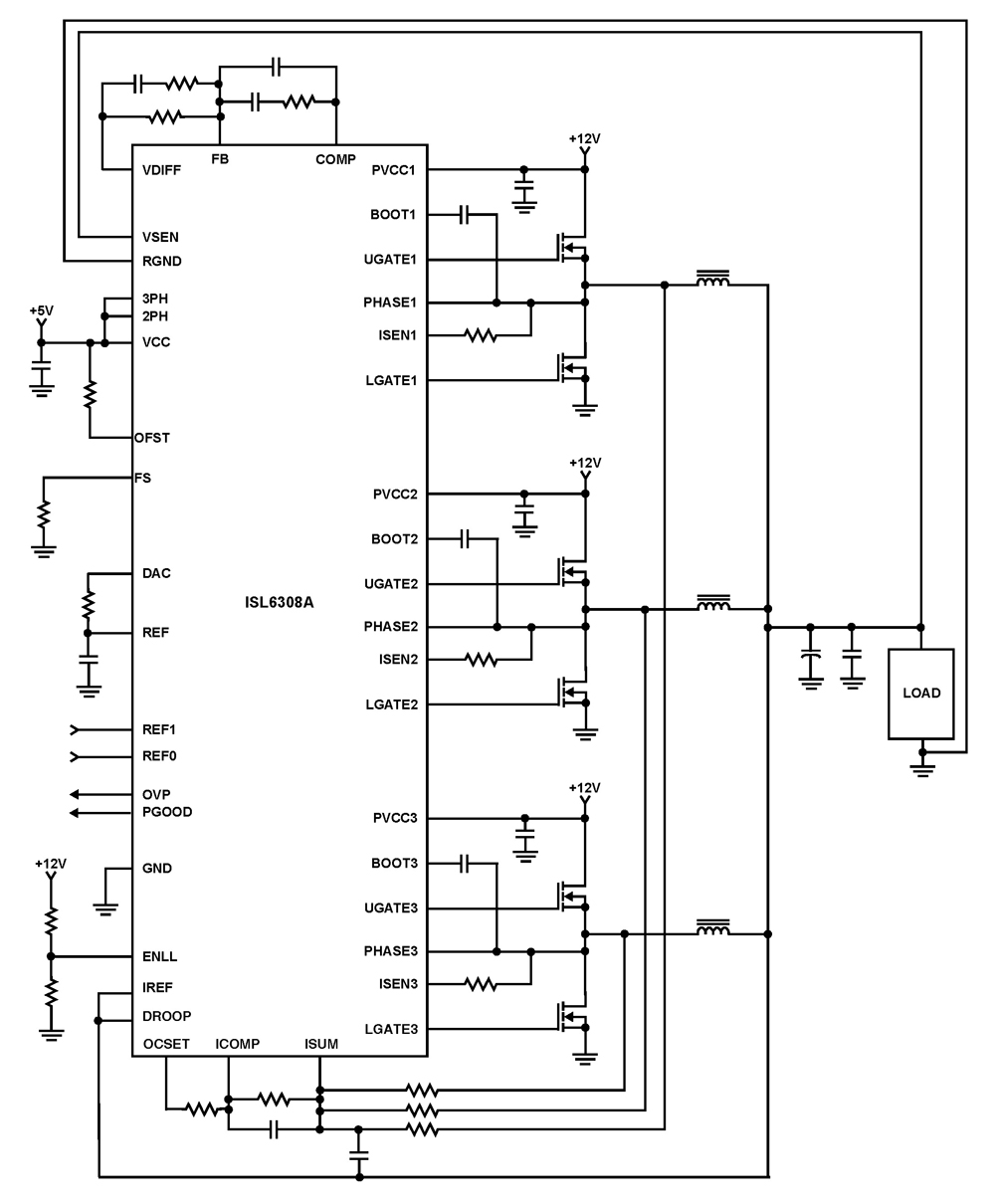
3A 6V/12V Solar Charge Control Circuit
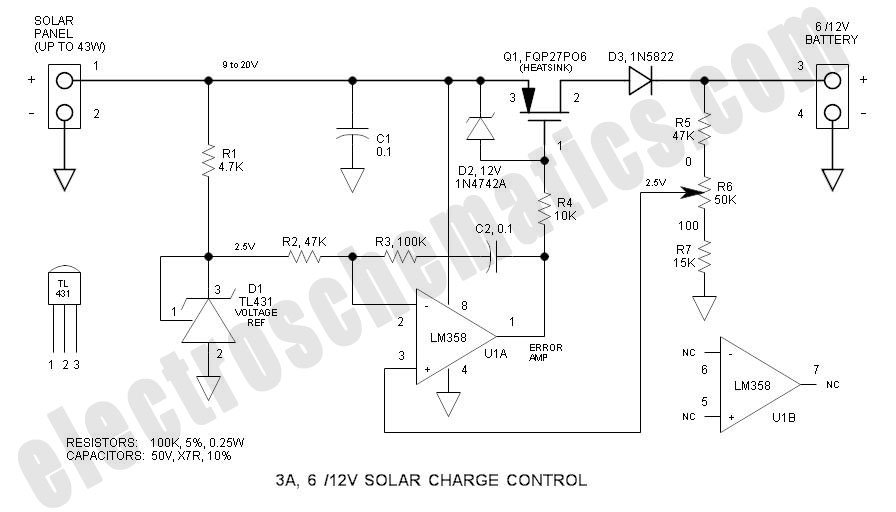
This solar charge controller integrates multiple features into a single design, including a 3A current rating, low dropout voltage (LDO), and a range of voltage adjustment capabilities.
The solar charge controller is a critical component in solar energy systems, tasked with regulating the voltage and current coming from solar panels to ensure optimal charging of batteries. This particular design, with a 3A current rating, is suitable for small to medium solar applications, effectively managing the energy harvested from solar panels.
The low dropout voltage (LDO) feature is essential for maintaining efficient operation, especially in scenarios where the input voltage from the solar panel may be close to the battery voltage. The LDO allows for effective regulation without significant voltage loss, ensuring that maximum energy is transferred to the battery.
The voltage adjustment capability is another crucial feature, allowing users to set the output voltage according to the specific requirements of the battery type being charged. This flexibility is vital for accommodating different battery chemistries, such as lead-acid, lithium-ion, or nickel-metal hydride, each of which may have different charging voltage requirements.
In addition to these features, the solar charge controller may include protection mechanisms such as over-voltage protection, over-current protection, and thermal shutdown to safeguard both the controller and the connected batteries. These features enhance the reliability and longevity of the entire solar power system, making it suitable for various applications, from residential solar installations to portable solar chargers.
Overall, this solar charge controller design exemplifies a comprehensive approach to solar energy management, combining efficiency, versatility, and safety in a compact and user-friendly package.This solar charge control combines multiple features into a single design: 3A current rating, low dropout voltage (LDO), range of voltage adjustment (accom.. 🔗 External reference
The solar charge controller is a critical component in solar energy systems, tasked with regulating the voltage and current coming from solar panels to ensure optimal charging of batteries. This particular design, with a 3A current rating, is suitable for small to medium solar applications, effectively managing the energy harvested from solar panels.
The low dropout voltage (LDO) feature is essential for maintaining efficient operation, especially in scenarios where the input voltage from the solar panel may be close to the battery voltage. The LDO allows for effective regulation without significant voltage loss, ensuring that maximum energy is transferred to the battery.
The voltage adjustment capability is another crucial feature, allowing users to set the output voltage according to the specific requirements of the battery type being charged. This flexibility is vital for accommodating different battery chemistries, such as lead-acid, lithium-ion, or nickel-metal hydride, each of which may have different charging voltage requirements.
In addition to these features, the solar charge controller may include protection mechanisms such as over-voltage protection, over-current protection, and thermal shutdown to safeguard both the controller and the connected batteries. These features enhance the reliability and longevity of the entire solar power system, making it suitable for various applications, from residential solar installations to portable solar chargers.
Overall, this solar charge controller design exemplifies a comprehensive approach to solar energy management, combining efficiency, versatility, and safety in a compact and user-friendly package.This solar charge control combines multiple features into a single design: 3A current rating, low dropout voltage (LDO), range of voltage adjustment (accom.. 🔗 External reference
